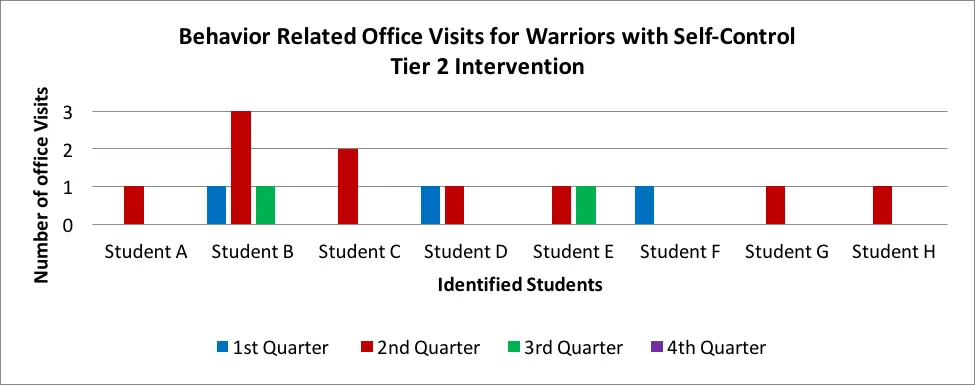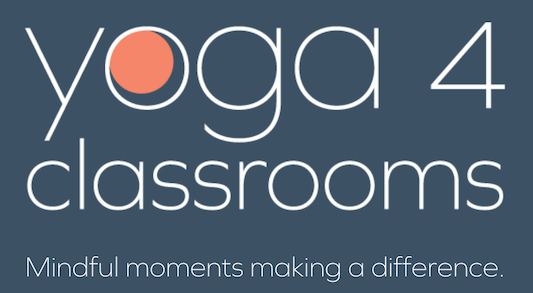
|
Check out our brand new product-- Yoga 4 Classrooms Tee! Wear Your Mindfulness With Pride!
|

Saturday, March 11, 2017 (Updated July 2021)
On a typical day, the average school counselor will encounter a wide range of “fires to put out.” As leaders within the school community, we support students’ academic performance, social/emotional learning, and promote college and career readiness. We also advocate on students’ behalf, support teachers and staff, as well as provide resources for families in need. Yoga and mindfulness practices can be useful tools to assist school counselors in implementing a comprehensive school counseling program. From my experience, I have learned that there are 4 powerful reasons why all school counselors should use yoga and mindfulness to support and strengthen their school counseling program.
As a school counselor, one of my primary tasks is to support students in closing achievement gaps. Over the last two years, I have used both yoga and mindfulness to support academic achievement gaps with my students. Last year, I used mindfulness practices to increase math standardized test scores with a targeted group of fifth-grade students. My experience and training with mindfulness practices introduced me to the brain-based research that supports using it with students. Studies show that following mindfulness training, the hippocampus, which is critical to learning and memory, becomes more active (Goldin & Gross, 2010) and has more gray matter density (Hölzel, B. K., Carmody, J. & Vangel, M., 2011). The prefrontal cortex is the part of the brain most associated with executive functioning skills and has also been found to be more activated following mindfulness training (Chiesa & Serretti 2010). When deciding how to develop my intervention, I started with a list of executive functioning skills for the students to strengthen. I also looked at current research in the field of mindfulness. Dr. Kimberly Schonert-Reichl of the University of British Columbia evaluated the effectiveness of the MindUp curriculum on students in fourth and fifth grade and found that 15% of students improved their math achievement scores (Schonert-Reichl, Oberle & Lawlor, 2015).
Taking all of the research into consideration, I developed a “Mindful Math Group” that met once a week for eight weeks. I introduced my students to a variety of mindfulness techniques with the intention of reducing test anxiety and improving executive function skills. We used conscious breathing, focused our attention on the present moment, learned organization and time management skills, and shifted our mindset to encourage resilience. At the beginning of each small group, we spent a “mindful minute” to “check-in” with ourselves and the present moment. I collaborated with the math teacher to conclude each group with a math problem in which students would apply the executive functioning skill that was taught that day. Each lesson was tied to the American School Counselors Association (ASCA) Mindsets and Behaviors for Student Success, specifically, those that were identified as being most needed by perception data collected from the teachers. In the end, 68% of participating students improved their test scores from the year before.
This year, I am integrating a yoga practice into Project Based Learning experience that is intended to support all fourth-grade students in passing their Virginia Studies Standards of Learning (SOL) assessment. As l disaggregated the data, I found that the students were struggling with memorizing the facts for this particular assessment. At the National Kids’ Yoga Conference in October (2016), I heard a keynote presentation by Dr. John Ratey, author of SPARK: The Revolutionary New Science of Exercise and the Brain which inspired me to integrate the physical practice of yoga to help my students memorize their Virginia Studies facts. Using his approach during the second quarter in 2016, I divided all fourth-grade students into small groups, gave them a list of facts to memorize, and tasked them with working in a group to create a yoga sequence to retell those facts. The students were highly engaged and very creative with their execution of this project. Although they have not taken their Virginia Studies SOL yet, 44% of students increased their report card grade for works effectively within a group from the first to the second quarter. The average perception of students’ attitudes, skills, and knowledge also improved following this project.
Our school district uses Response to Intervention (RTI), which is a common multi-tiered support system for students struggling with academic achievement and/or behavior. Since several studies have examined the positive impact of yoga on behavior in schools, I decided to try it with my students. I began to integrate yoga into my classroom guidance lessons as a Tier One intervention for all students. After identifying a group of students that needed more individualized behavioral support, I created a Tier Two intervention using yoga to reduce behavior-related office referrals. I designed and implemented an eight-week, small group yoga program titled “Warriors with Self-Control” to help these students with impulsivity and self-regulation. By the end of the eight weeks, behavior referrals were significantly reduced and teacher perception of the students’ ability to use self-control increased by 92%. These results led the teachers at my school to become more interested in these techniques and how yoga interventions can provide behavioral support.

Most yoga practitioners have heard the term “taking your yoga off the mat,” and promoting a school culture of kindness and compassion does just that. I use the Yamas and Niyamas, yoga’s universal principles, combined with the ASCA Mindsets and Behaviors to drive my core counseling curriculum. They provide a valuable framework for my classroom guidance lessons and promote character education. During the last few years, I have used the philosophies of classical yoga to enhance my school’s anti-bullying campaign called Compassion in Action. My classroom lessons have focused on using compassion and empathy to decrease bullying and we have seen great success so far. This year, our focus is self-compassion and we are using a wide range of yoga and mindfulness practices to enhance this focus. Students have also enjoyed learning a new yoga pose every week during our morning news show!
Last, but certainly not least, we can all use a little bit of self-care and stress management. Yoga and mindfulness practices provide fantastic opportunities to teach students AND teachers and staff, about stress reduction and burnout prevention. My students learn the benefits of “rest and digest” and how yoga and mindfulness can trigger the relaxation response within their bodies. They learn to be aware of the signs that their body gives them when their “fight or flight” response is activated and how to use self-regulation strategies that help deactivate the sympathetic nervous system. I have offered PTA (Parent-Teacher Association) presentations on the benefits of yoga and mindfulness as well as staff development on strategies to prevent burnout. Yoga and mindfulness practices assist my students in so many ways. AND, they help me be more effective as a school counselor.
As you can see, there are many benefits to integrating yoga and mindfulness practices into your comprehensive school counseling program. In fact, Dr. Julia Taylor from the University of Virginia recently completed a dissertation titled The Experiences of School Counselors Who Integrate Yoga into a Comprehensive School Counseling Program: A Phenomenological Approach. It’s worth a read! In the end, I cannot imagine my school counseling program without these integrated practices!
—
References:
Chiesa, A., & Serretti, A. (2010). A systematic review of neurobiological and clinical features of mindfulness meditations. Psychological Medicine, 40(08), 1239–1252.
Goldin, P. R., & Gross, J. J. (2010). Effects of mindfulness-¬based stress reduction (MBSR) on emotion regulation in social anxiety disorder. Emotion, 10(1), 83.
Hölzel, B. K., Carmody, J., Vangel, M., Congleton, C., Yerramsetti, S. M., Gard, T., & Lazar, S. W. (2011). Mindfulness practice leads to increases in regional brain gray matter density. Psychiatry Research: Neuroimaging, 191(1), 36–43.
S.Schonert- Reichl, K. A., Oberle, E., Lawlor, M. S., Abbott, D., Thomson, D., Oberlander, T., & Diamond, A. (2015). Enhancing cognitive and social-emotional competence through a simple-to-administer school program. Developmental Psychology, 51(1): 52–66.
—
Erin Hurley, M.Ed., RYT, RCYT, is the Fairfax County Public Schools “School Counselor of the Year” and serves as Vice President of the Virginia School Counselor Association. She has worked in public education for 14 years, spending her first seven years as a kindergarten teacher before completing her M.Ed. in Counseling and Development at George Mason University. In addition to her current role as an Elementary School Counselor at Cherry Run Elementary in Burke, VA, she is also a Registered Children’s Yoga Teacher and has completed Mindful Schools curriculum training. She presents regularly on the topics of yoga, mindfulness, and social and emotional learning at area school counseling conferences. As a Yoga 4 Classrooms IMPLEMENT Leader, Erin is leading the implementation of Yoga 4 Classrooms school-wide as well as training other school counselors throughout her district.
—
Related Articles:
Inner City School Principal Shares Results of School-Wide Implementation of Yoga 4 Classrooms | VIDEO
Scientific Evidence for Yoga & Mindfulness in Schools: How & Why Does it Work?
The Benefits of Meditation for Children | Forbes article
An Antidote to Teacher Burnout – How Yoga and Mindfulness Can Support Resilience In and Out of the Classroom
| Cookie | Duration | Description |
|---|---|---|
| cookielawinfo-checkbox-analytics | 11 months | This cookie is set by GDPR Cookie Consent plugin. The cookie is used to store the user consent for the cookies in the category "Analytics". |
| cookielawinfo-checkbox-functional | 11 months | The cookie is set by GDPR cookie consent to record the user consent for the cookies in the category "Functional". |
| cookielawinfo-checkbox-necessary | 11 months | This cookie is set by GDPR Cookie Consent plugin. The cookies is used to store the user consent for the cookies in the category "Necessary". |
| cookielawinfo-checkbox-others | 11 months | This cookie is set by GDPR Cookie Consent plugin. The cookie is used to store the user consent for the cookies in the category "Other. |
| cookielawinfo-checkbox-performance | 11 months | This cookie is set by GDPR Cookie Consent plugin. The cookie is used to store the user consent for the cookies in the category "Performance". |
| viewed_cookie_policy | 11 months | The cookie is set by the GDPR Cookie Consent plugin and is used to store whether or not user has consented to the use of cookies. It does not store any personal data. |

Sign up for our newsletter to get mindfulness tips, classroom tools, and exclusive offers—delivered straight to your inbox.
✨ Join now and get 10% off your first order! ✨